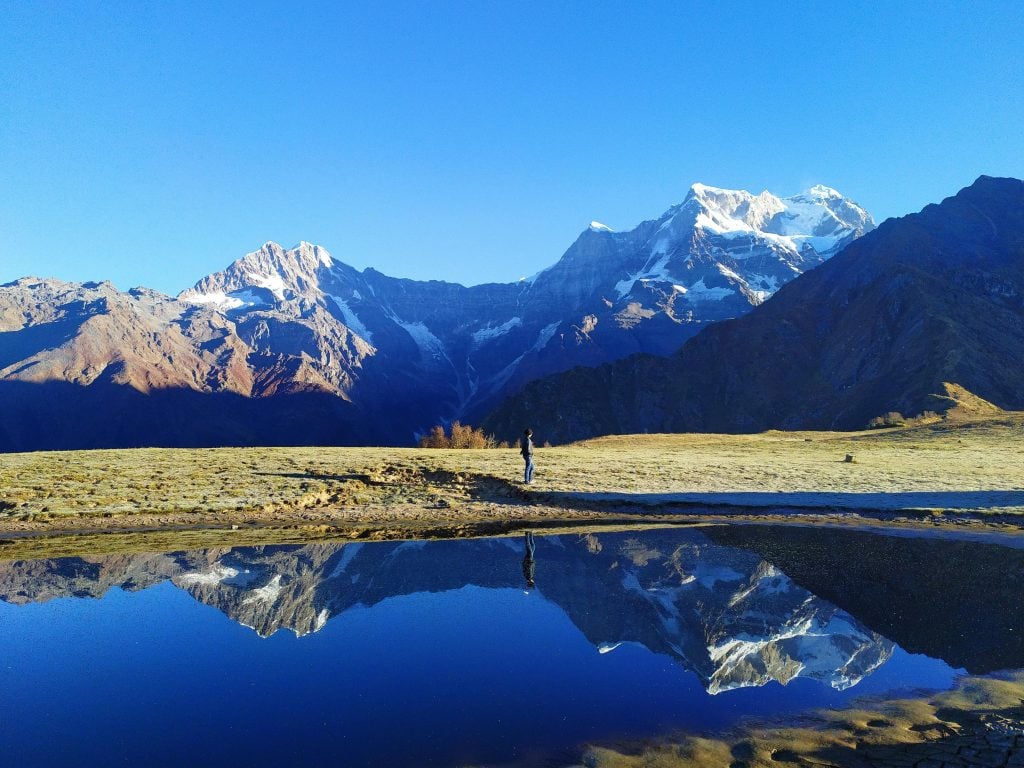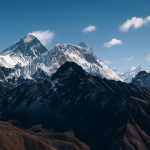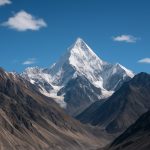Mount Chaukhamba: Ascent in the Garhwal Himalayas
Chaukhamba I, standing at an impressive 7,138 meters (23,419 feet), is the highest peak in the Chaukhamba massif of the Garhwal Himalayas in Uttarakhand, India. This peak, part of the Nanda Devi Biosphere Reserve, holds significant geographical and cultural importance. It is located near the Gangotri Glacier, which is the source of the Bhagirathi River, an important tributary of the Ganges. Mount Chaukhamba: Ascent in the Garhwal Himalayas
Geographical and Technical Features
Chaukhamba I, with its distinct four-pronged summit, dominates the region and is a prominent feature in the Garhwal Himalayas. The mountain’s topography is characterized by steep rock faces, crevassed glaciers, and sharp ridgelines. The massif comprises four peaks, with Chaukhamba I being the tallest, and offers a challenging ascent for experienced mountaineers.
Climbing Chaukhamba requires advanced technical mountaineering skills. The approach typically begins from the Gangotri Valley, passing through the Chaukhamba Glacier. The route involves extensive glacier travel, steep ice climbs, and navigating narrow ridgelines. The terrain is marked by unstable rock, treacherous snowfields, and high avalanche risk areas. Climbers also face challenges such as technical rock climbing and alpine ice climbing, making it a multi-disciplinary ascent.
Climbing History and First Ascent
The first successful ascent of Chaukhamba I occurred in 1952 by a French expedition. Since then, the peak has remained a popular destination for high-altitude mountaineers seeking a technical challenge. Despite its relatively accessible location compared to other high peaks in the region, the mountain’s technical difficulty and unpredictable weather have made it a lesser-attempted climb.
Weather Conditions and Climatic Challenges
The weather around Chaukhamba I is notoriously unpredictable. The region experiences extreme conditions, especially during the monsoon season. Heavy snowfall, strong winds, and low visibility can pose significant challenges for climbers. Even during the best months for climbing, temperatures can drop drastically, and sudden snowstorms are common at higher elevations. Climbers must be prepared for cold temperatures and rapid weather changes at all altitudes.
The optimal climbing season for Chaukhamba is typically from May to June (pre-monsoon) and September to October (post-monsoon), when the weather conditions are relatively stable and the glaciers are more manageable. However, climbers must still be prepared for harsh conditions, including the possibility of unexpected storms or snow accumulations.
Access and Permits
Access to Chaukhamba I requires permits from the Indian Mountaineering Foundation (IMF) and local authorities, as the peak lies within a protected region. Expeditions generally begin at Gangotri, a sacred town located near the base of the peak. The approach to base camp is accessible via trekking routes that pass through the Bhagirathi and Tapovan valleys.
Due to the technical challenges and high altitude, mountaineers must be well-acclimatized and in excellent physical condition before attempting the summit. The climb requires careful planning, both logistically and strategically.
Environmental Significance
Chaukhamba I is part of the Nanda Devi Biosphere Reserve, which is a UNESCO World Heritage Site. The area is rich in biodiversity, with unique alpine flora and fauna. The surrounding region also holds spiritual significance for local communities, with many regarding the mountain as a sacred peak.
Conclusion
Chaukhamba I represents a technically demanding and geographically significant challenge in the Garhwal Himalayas. Its combination of steep ascents, unpredictable weather, and the need for multi-disciplinary mountaineering skills makes it a suitable objective for experienced climbers. Given its historical and ecological importance, it remains a prized peak in the mountaineering community and a symbol of the natural beauty and ruggedness of the Indian Himalayas. Highest Mountains in India
Chaukhamba — The Mountain On The Far Horizon





